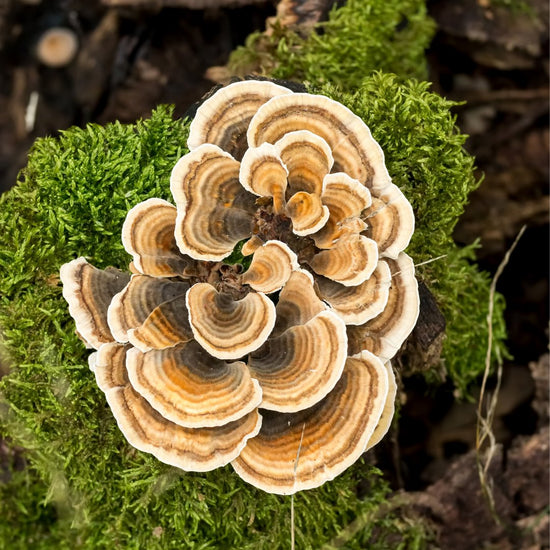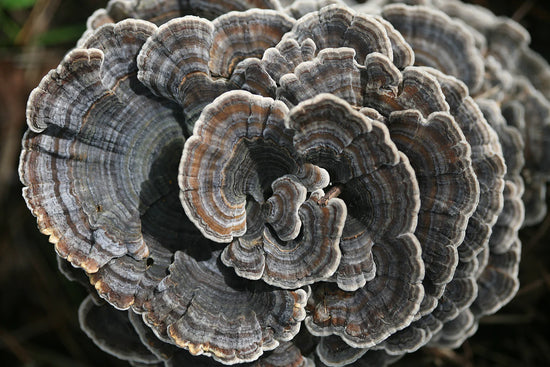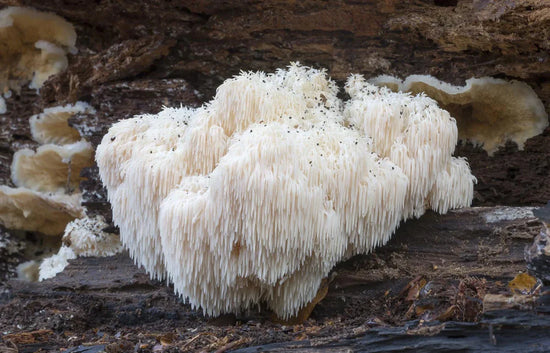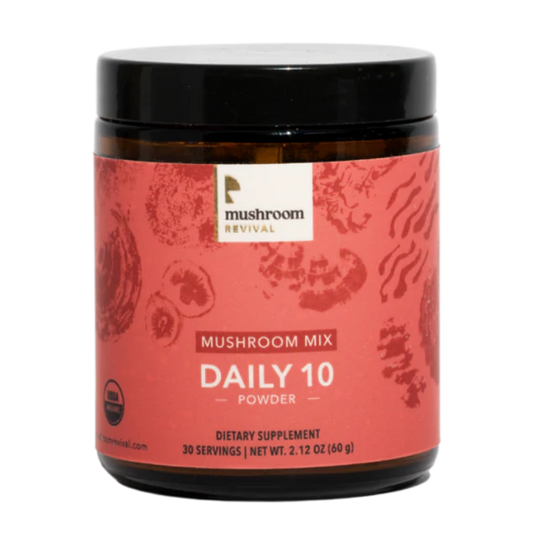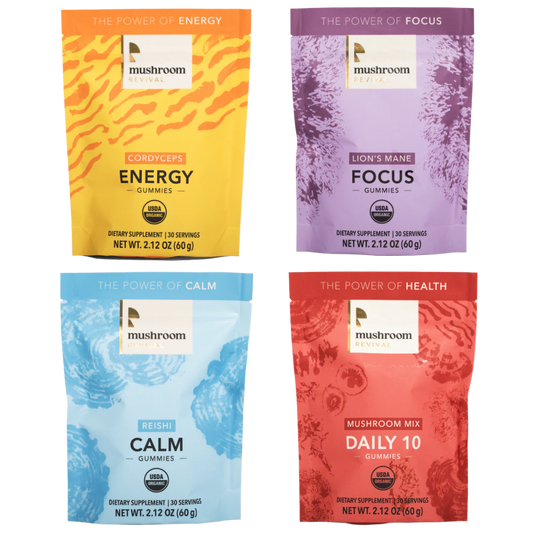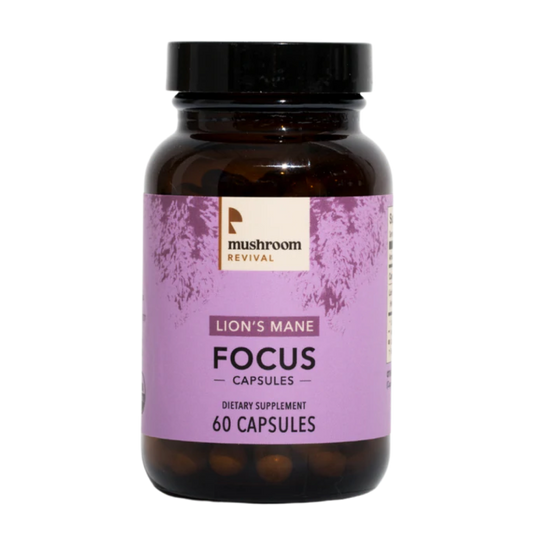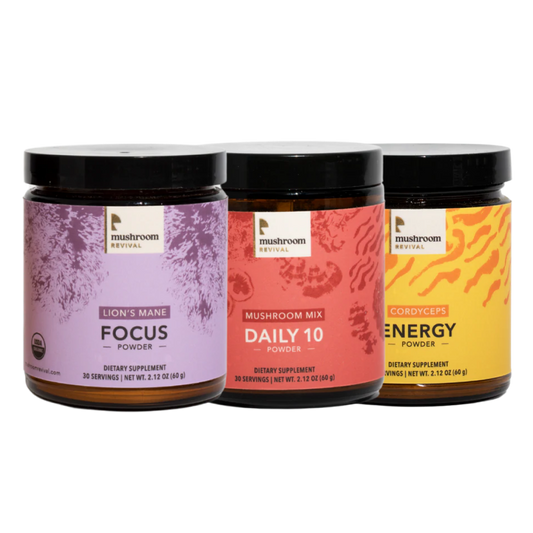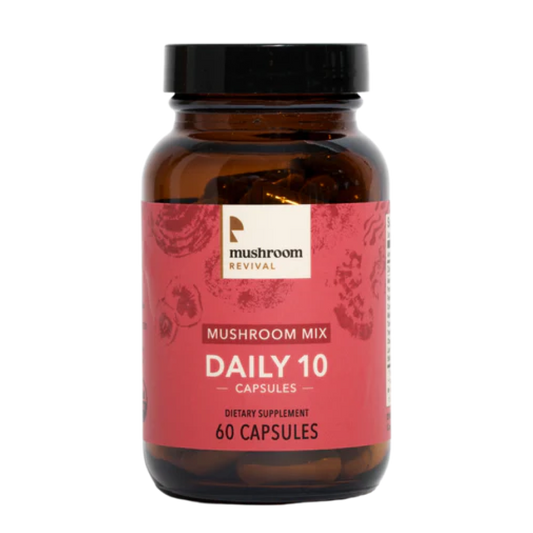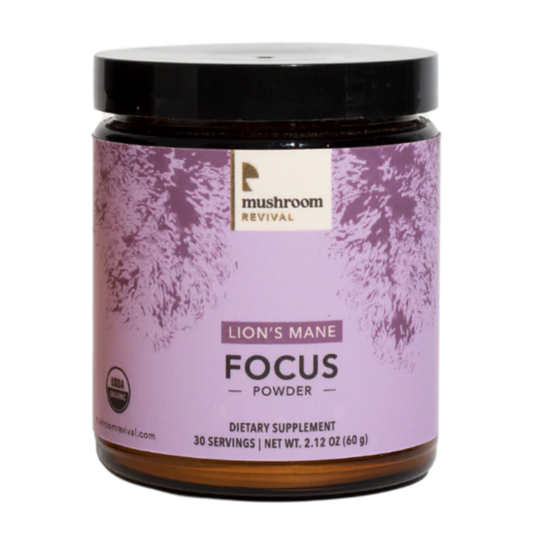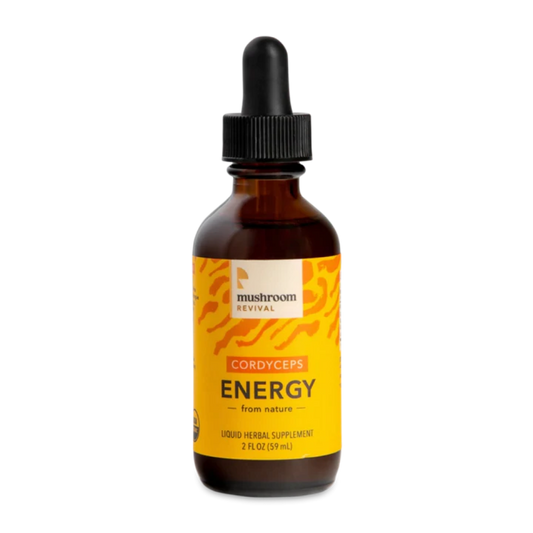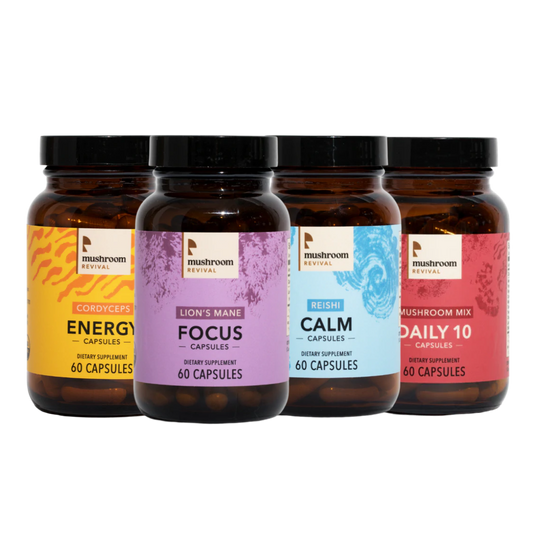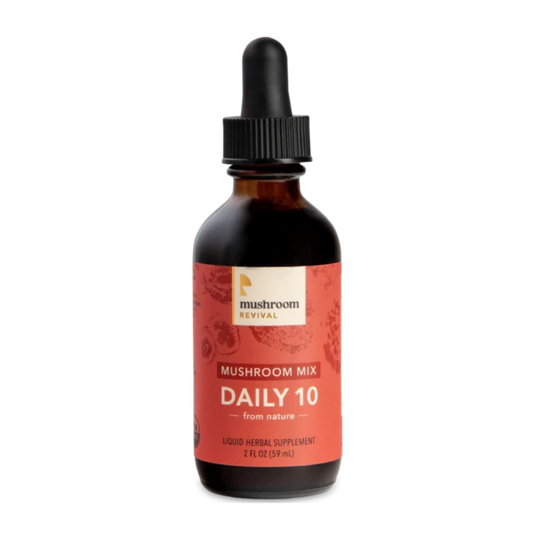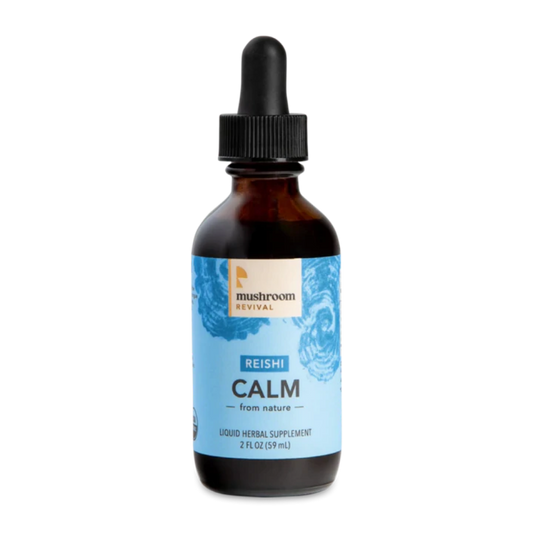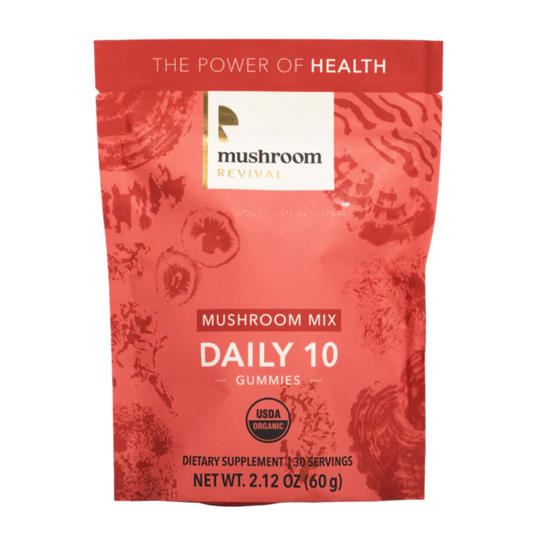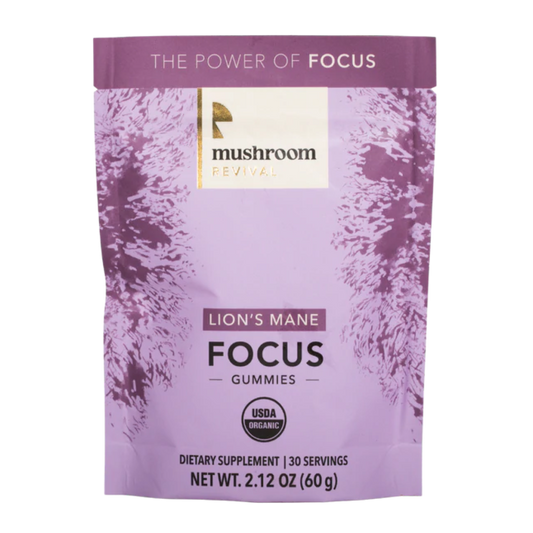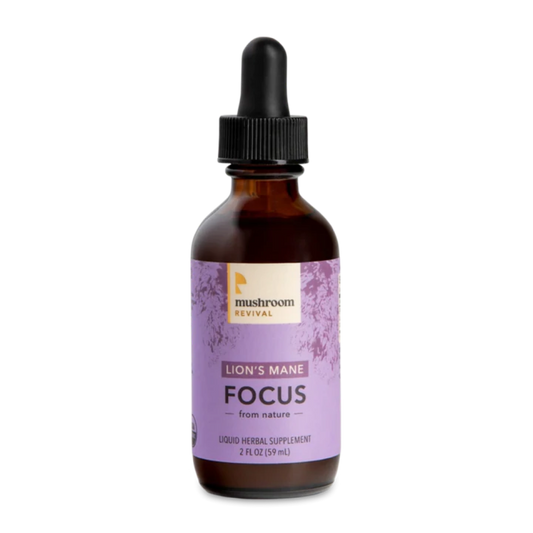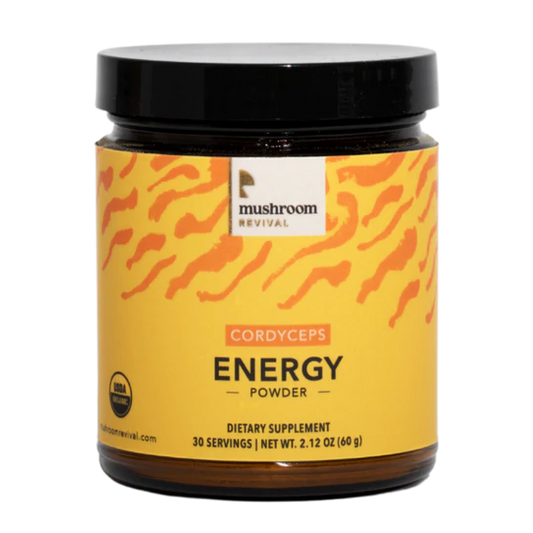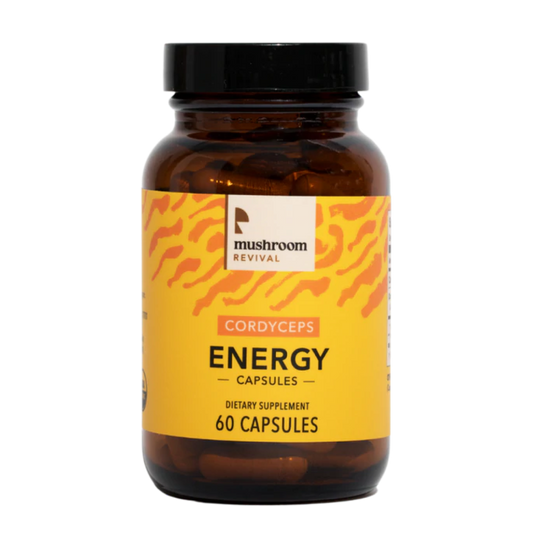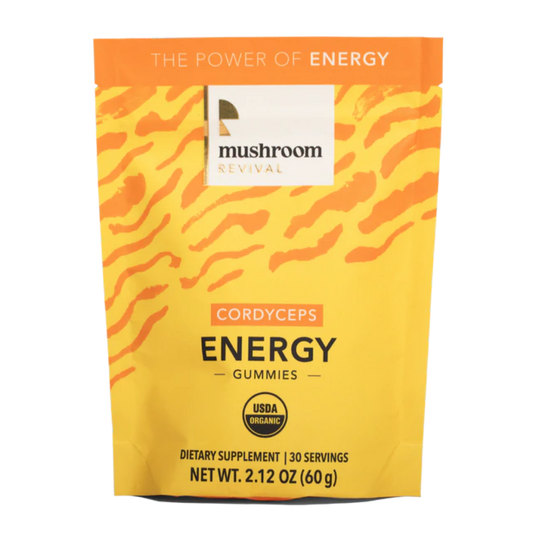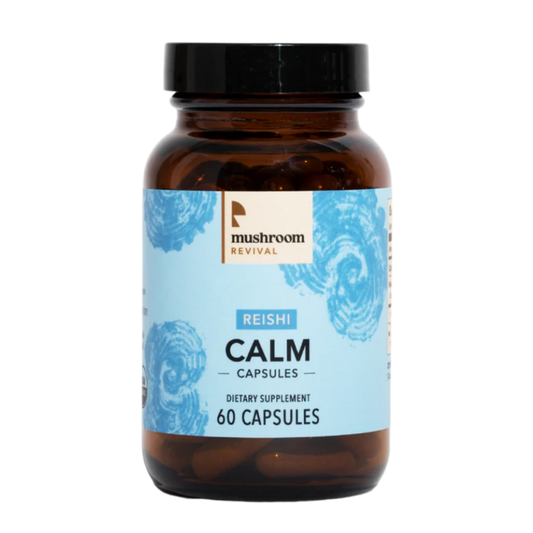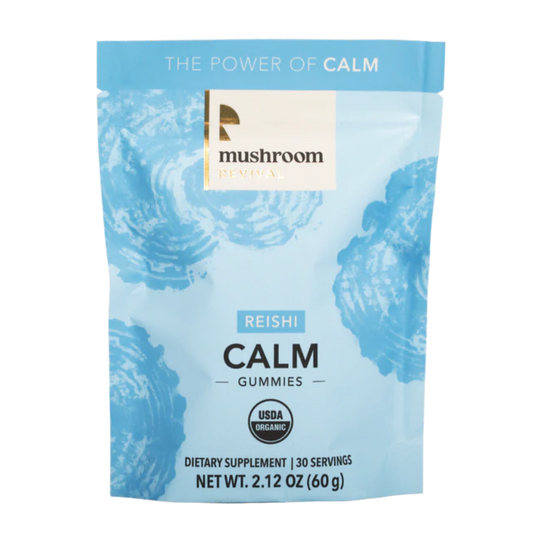How Fungi & Bacteria Interact
Lera Niemackl
">
.js?container_id=buzzsprout-player-&player=small"
type="text/javascript"
charset="utf-8">
Fungi have a microbiome. Bacteria live in and on fungi, and their presence has been shown to be impressively influential on the ecology as a whole. Their co-evolution has shaped the trophs, genetics, metabolisms, vitality and more within these two kingdoms of life. Be prepared to reimagine fungal vigor and success as a communal effort.
Today we welcome the eloquent and brilliant Dr. Jessie Uehling from Oregon State who has been pioneering much of the research in the field.
Topics Covered:
- The primary ways fungi and bacteria interact
- Co-evolution of bacteria and fungi
- The implications of fungal-bacterial interactions with human life and ecosystem health
- Brief discussion on fungal-fungal interactions
- Diversity of fungal-bacterial interactions
- Mechanism of hyphal invasion
- Antibiotics and their effects on endosymbionts
- Fungal mating and how endosymbiotic impact reproduction
- How these relationships are studied in the lab
Show Notes:
- Dr. Jessie Uehling's website: http://jessieuehling.com/
- Endosymbionts protect their fungal hosts from nematodes: https://www.pnas.org/content/118/37/e2110669118.short
- Fungal endosymbionts metabolites: https://pubmed.ncbi.nlm.nih.gov/16939276/
- Mechanisms of hyphal invasion: https://pubmed.ncbi.nlm.nih.gov/25182414/
- Bacterial on the ‘Fungal Highway’: https://www.youtube.com/watch?v=AnsYh6511Ic , https://pubmed.ncbi.nlm.nih.gov/26432804/
- Fungal endosymbionts control host fungal sexuality: https://www.nature.com/articles/s41467-017-02052-8https://www.ncbi.nlm.nih.gov/pmc/articles/PMC7308579/
- Reinfection of fungal hyphae with laser tweezers: https://www.sciencedirect.com/science/article/pii/S0960982207011438
- The search for the fungal immune system: https://journals.plos.org/plospathogens/article?id=10.1371/journal.ppat.1006578
- Black fungus outbreak in India: https://www.nytimes.com/2021/06/20/world/asia/india-covid-black-fungus.html
Shop All Mushroom Revival Products
TRANSCRIPT
Transcribed by https://otter.ai** Subject to error
Alex 0:00
You're listening to the mushroom revival Podcast.
Lera 0:03
Today on the show we have a mycologist from Oregon State who is going to chat with us about the compelling interactions between fungi and bacteria. This world of bacterial and fungal interactions is oh so nascent but wow, it's good stuff and it's very much worth paying attention to and we hope this will be one of many episodes on the mushroom revival podcast that covers it. This episode has easily become one of my favorites and I think you myco nerds will really enjoy it. I want to apologize for the mic quality we somehow miss routed the sound to go through my computer and not our fancy mics so it doesn't sound as good as usual but hey, still turned out pretty crisp and clear. Let's get into it.
Alex 0:49
But before we dive in the review of the week this one is from Mac a frame Allameh 559 Great username. The subject is love, love love. The content is love this podcast and their products keep killing it lire and Alex keep spreading the spores. Much love. Much love right back at you amazing review. If you want to be featured like maca fram Allameh 559 Write us a review, we'll pick our favorite one every single week and feature it on our show. We don't take donations. We don't have a Patreon reviews go a long way in promoting our show. If you want to go further in supporting the show. We have a website mushroom revival.com We worked so freakin hard blood, sweat and tears to make you a line of extremely potent, amazingly delicious and easy to use functional mushroom products from tinctures to capsules to powders. And we have gummies coming out really soon all organic, all cGMP compliant, these are extremely potent, and they work. These are our babies and we're really proud of them. If you go to a website too, you can see all of our show notes from all of our podcasts with a bunch of links to learn more about these topics. And if you're listening, we are offering a special discount code pod treat for a unknown amount. We change this discount code all the time it is a complete surprise. So you have to plug it in. To find out what you are getting this week we change it on randomly so who knows what you're going to get. It could be very large, very small, right in the middle. You got to find out for yourself. But we are super excited to bring you this week's episode. Get ready to tune in and trim it.
Lera 3:10
Jessie Welcome to the mushroom revival podcast. We're so excited to speak with you about this compelling topic. That has been something in my on my mind for many, many months, if not years, when it comes to working with mycology. And that is how fungi and bacteria interact. Huge question. So glad we found you to speak to it. So if you could just start off with telling us your full name and where you are and what exactly you're studying.
Jessie 3:39
Hey, thanks for having me. I'm super excited to join you guys today. Love the podcast. My name is Jessie YuLing. I'm a professor at Oregon State University, where I have a research lab mostly focused on bacterial fungal interactions and evolution of fungi in symbiosis with other organisms. And also take care of our herbarium collection of dried fungal specimens. Mushrooms could think of it as a mushroom library, as well as teach mycology and Population Genomics. So aware of many hats there at OSU.
Lera 4:15
There are so many great mycologist at OSU. You might be the third or fourth person made spoken to them and we haven't even gotten through all of them. So what a fun place to be.
Jessie 4:28
It is wildly exciting how many mycologists both professors and students and postdocs fungal enthusiasts are in Oregon, especially at OSU we have a real hub. Is this a recent thing? I don't know how long you've been there, but yeah, how long has it been a fungal hub? You know, it's been a hub for a long time. There's some heavy hitting my colleges who have made whole careers at Oregon State before me and there's a new crop of young mycologists early career faculty so I
I would say overall, probably 10 or 12. Professors, and then their groups, they probably have five to seven students and postdocs each so probably upwards of 30 to 50 mycologists here at OSU, it's wonderful.
Alex 5:17
Wow, you make me want to move to Oregon.
Jessie 5:21
And not only that we have some incredible fungal diversity, both edibles and just the mushroom season is divine here. It really is.
Alex 5:30
Yeah, we're training our puppy to be a truffle Hunter. And we're the people that we're training with. They're in Oregon. And they kind of gave us we have some pecan truffles here in Texas, but they kind of gave us a look like, Hey, you guys got to come to Oregon, you know, you guys have the truffle festival there and so many wonderful species. So yeah, it's a really cool place.
Jessie 5:59
Come visit, if you get the chance. We'd love to have you.
Lera 6:02
Yeah, we got a for sure. Texas is a little too hot. And not a lot of mushrooms here. So we'll get sick of that real quick. But anyway, let's dive into your work. So this field is what exactly do you call it? And when you're considering bacterial fungal interactions, are you thinking more symbiotic, parasitic, or just? Period? How are are like, what are the exact ecosystems that you've studied between these two kingdoms? Well, it's
Jessie 6:35
a great question. And to be honest, we're at the tip of the iceberg. I'll call it fungal bacterial interactions, or sometimes bacterial fungal interactions. And the truth is, these happen in so many different contexts, we study them, mostly in plant associated fungi. And we're starting to branch out into medically relevant fungi. But honestly, anywhere you find fungi, you're going to find bacteria. And often in those environments, those two organisms from separate kingdoms have been interacting, and in some cases, co evolving for a long, long time. So this has impacts for Applied senses in many contexts in medicine, and agriculture and food production, literally, almost everywhere. And many of our favorite food products like wines, cheeses, breads, Tempe sakeI, soy sauce, human skin in wounds, all of these places are rich with fungi and bacteria that are interacting. We particularly have a long history of studying fungi that are associated with plant roots living in soil in the bacteria that live inside of their cells that we call endosymbionts. And it turns out that some of those fungi also venture into clinical settings and get into humans lungs, and sometimes wounds where they live and cause problems. And so those are the contexts that we've been thinking about. But bacteria, fungal interactions are happening in so many different places and have all sorts of implications for human life.
Alex 8:13
And how did scientists figure out that they were interacting in a symbiotic way, as opposed to just interacting closely in a close proximity to each other?
Jessie 8:26
That's a great question. And I think it's a it's going to be a fun opportunity to explore what exactly a symbiosis is. So oftentimes, I hear people use the word symbiosis and, and then further dissect it into two categories, two buckets, one, mutualism where both organisms benefit. And sort of the opposite end of the spectrum being parasitism, where one or both organisms are, are being detrimental to each other being harmful or parasitic. And I really like to think of this more as a spectrum where the nature of that interaction could slide between, and an even more complicated, it's context dependent. So sometimes two organisms could be helping each other in one setting, and yet taking resources from each other in another. And that is dependent on the context in which they find themselves. So sometimes, although they are hurting each other, they could also be helping each other in a different time or in a different way. Now, your question was, how did scientists figure this out? And the short answer is we're still working on it. So how can we quantify a benefit? Or how can we see a Resource Exchange or a service exchange? The ways that we have thought about it are measuring growth rates? Do fungi and bacteria increase each other's growth rates? Or in the case of metabolites, which we find are often involved? If they're exchanging metabolites, do they have all the genetic machinery that would enable them to Do it. Is it physically possible? And if so, do those resources accumulate when one of their partners is absent? So if for example, fungus and a bacterium are sharing lunch, and the fungus is giving the bacterium cheese, in the absence of the fungus, if you take the fungus out of that system, you should see that she's accumulate. So simple co culture experiments have been the initial entry points into the nature of the symbiotic interactions, but it's, it's quite complex, and we're just getting started. It's such an exciting time for the field.
Lera 10:34
Yeah, co culturing is something I kind of do for fun and my lab like up whenever I have leftover cultures from some inoculations. I'm like, What happens if I put this Panos diptych ism ganoderma. Together, like, you know, just to see the kinds of interactions they have in isolation together on a plate. And there's so much here, it's it's daunting sometimes to even consider, but I want to think about the mechanisms of these metabolite sharing is this like, we can picture the fungus and bacteria spitting out these enzymes? And they're, you know, benefiting from the metabolism of one another that perhaps they couldn't produce themselves? Or is the fungi or bacteria absorbing a metabolite into their own through their own lipid bilayer? Or whatever it is? I mean, what what can you say about the mechanisms here?
Jessie 11:25
Yeah, so sometimes sharing is a passive, you know, they're in the same place at the same time and passing wholesale resources to one another, but more often active. So what does that mean? And you kind of got to break it down further into flavors of bacterial fungal interaction. So we often think of two buckets, one being free living bacterial fungal interactions, in which case, the bacteria can live on their own in the environment, and happen to be in the same place at the same time and interact with fungi. And the other is endosymbiotic bacteria, in which case, the bacteria actually live inside of the fungal cells. And we study that second case a little more frequently, we use that system in lab more often. There, when we think about metabolite exchange, it can be kind of one of two flavors. The first is like you said, wholesale trade, all make product A and you make product B and we'll both just swap. And the other, which is really fascinating to me, is a genetic mosaic approach to synthesizing a common shared resource. So if both organisms are interested in making a product, they don't both need to keep entire metabolic or biosynthetic pathways for that product. They can work collaboratively in a puzzle piece fashion, and the fungus will make you know, gene A for enzyme one, and the bacterium will do gene B for enzyme to and they trade off so that each may not be able to produce that product alone. But together they have the right complement of genes and functional capacity to to thrive and survive and trade that resource. So there's different ways that these trades happen. But it's very interesting when you get out onto the obligate end of the semiotic spectrum, because these genomes actually evolved to represent what those organisms are trading back and forth, if that makes sense.
Alex 13:34
Do we know how many species of bacteria can live inside of one species of fungi? Is it pretty limited? Or is it pretty abundant, like our gut? Do we have any sort of understanding on this?
Jessie 13:52
Yeah, we do have some data on this from my group and from others. So far, it seems like the diversity is a little more limited than, for example, animal gut, or the plant root microbiome, which are comparisons that we often make. And I think the reason is because it's spatially quite a bit smaller. Right now there's a finite amount of resources inside of a fungal cell that a bacterium could use. And so we've used next generation sequencing and detected up to five or six co residing unique bacterial genotypes in one fungal cytoplasm. But the situation we see more often is that one fungus is dominated by one or two bacteria. And it's also interesting to note that not all fungi host endo bacteria. So we see examples of, of endosymbionts across the fungal tree of life. And again, we're just getting started in the field. It's really exploding right now. But within systems where we've kind of dug down into mechanisms and use genomics to try to understand these relationships. What we've come to learn is that not all fungi always have an assembly arms. So they're there. And they seem to be doing important things when they are present. But they're not universally present in all fungi.
Alex 15:16
Do we have a way to kind of implant them to see if they will have a relationship?
Jessie 15:25
That's a great question. And it's actually research we're hoping to undertake in lab soon the microbiome swap experiments. Several groups have done what we call clearing, so using antibiotics to get rid of endosymbiotic bacteria, and then putting them back in. And so this requires a skill. Yeah, I know, right? It's pretty cool. It requires a special kind of endosymbiotic that we call facultative. And it's facultative, in the sense that it can go inside a fungal cells, we find it living in the fungal cytoplasm, but it can also leave the fungus doesn't, it's not dependent on the fungus for all the things that it needs to live, it can live independently. So it goes in and out of cells. And this is important, experimentally, because you have to be able to culture these bacteria to do the microbiome swap experiment, and in fact, many experiments, right? So we're just developing tools now for making things glow, so that we can use fluorescent microscopy and, and things but other groups have used what they call micro lasers. And essentially, they physically drill a hole in the fungal cell wall and pop a bacterium back in. So that's the closest
Lera 16:43
I can picture drilling the hole with the laser, but how do you get the bacteria in their
Alex 16:48
tiny tweezers?
Lera 16:52
Just make maybe a liquid culture and you're just hoping some of it will fall into the cytoplasm.
Jessie 16:57
So I believe the cultured on solid media and then use the micro tweezers, coculture, fungi, bacteria on solid media and use the micro tweezers to
Alex 17:06
wave No, I was joking. When you actually little tweezers,
Lera 17:12
I really want to picture this. Yeah, if you have any videos of this inaction, I'm just so curious to see
Jessie 17:19
it. I can point you towards a paper. This was my research from my group. This was from a German Research Group, but I can picture it in my mind. And it's actually they did that experiment because of what we know about how some bacteria get into fungi in the first place. So one question is, okay, these bacteria are there. And apparently, sometimes, in some cases, they can leave, but how do they actually physically get into the fungal cell? And like most of your questions, we're just getting started understanding the answers. But we do know that some bacteria have chitin lytic enzymes, so enzymes that are capable of breaking down the fungal cell wall, physically drilling a hole, and then popping back into the fungal membrane and into the cytoplasm. And so that this group, this German group, became interested in doing the, you know, the clearing and the reentry, because of the mechanism that some bacteria used to enter fungal cells in the first place. They have an enzymatic capacity that allows them to physically drill a hole and pop in.
Lera 18:25
Yeah, I was wondering that myself, and I saw that you did share a paper on the mechanisms of hyphal disruption or breaking in? And is that mostly what you've seen? Are there any other instances where maybe the fungus is swallowing the bacteria? Because I've heard in some, like cultivation culture, that fungi eat bacteria? So it almost sounds like, there's this reverse thing where the fungus is trying to encapsulate the bacteria, which is not how fungi usually eat, you know, they're extra extracellular digesters. So that's a curious question, as well. But yeah, have you seen any other mechanisms?
Jessie 19:06
I have not seen any other mechanisms in the literature so far. But I know that there must be more complex ways that this happens. And I know also know, there's active research in this sector happening now. So it's funny in a lot of a lot of ways, this field has just recently opened up. And we're getting started with the tools that we have, but it's a crossover of organisms that have been evolutionarily diverged in separate kingdoms for so many, you know, 1000s of evolutionary years, that we really use different tools to think about fungi and bacteria and different tools still are needed to study their interactions. Think micro tweezers
Lera 19:54
so I'm able to picture and I may have even seen this before in our own lab. Just doing microscopy and seeing like, some little wiggly things in between the sub date and specific cells. But how do these bacteria travel throughout the filaments? And do you notice that they like to stick? You know, more in the center of the network? Or do they sort of travel with the hyphal tip? And you weren't? What have you seen with? How the bacteria move within the fungi?
Jessie 20:25
It's another great question. And I think there's actually two parts of this. One is, what tools can we how can we be sure that it's the endosymbiont in the first place. And the short version of that is, you really need to do a special kind of microscopy to see that bacterial cell inside the fungal cell. Because we know that a lot of bacteria, for example, will live on the outside of fungal cells, using fungal excretions, and metabolites as a film to swim along what we call the fungal superhighway. And so to differentiate between endosymbiotic and free living bacteria, you really need to do either fluorescent microscopy, to bind a fluorescent probe to bacteria and show that they're inside the cell or transmission electron microscopy. So a cross section in visually see that bacterium inside of the fungal cell. As far as squeezing through, for example, step D, or where they are in the growing culture, we're not exactly sure, we do have beautiful T DMS transmission electron micrographs of these endo bacteria, so we know that they live inside, but we're not exactly sure, in which portion of the culture the older or the newer portion they like to reside in typically, I assume they must move and go between between the divisions within the cells. But I haven't captured that yet on film, I'd like to, and I'm working with collaborators to develop some new microfluidic devices to to see that on a higher resolution. I will say, though, that one of our most commonly used protocols in the lab is to take tissue from an actively growing fungal culture along the outside of that culture, and move it to a new place. That's how we transfer these organisms or keep them alive in lab. And that almost every time we'll give you a new fungal culture with bacteria, so we know at least in part, they're somewhere near the edge of the growing colony. But are there more in the middle? Or in the older sections? Is there a spatial division of labor? These are all excellent open questions.
Alex 22:42
So about these bacterial highways, because it's one of my favorite images of all time, or I should say GIFs, or videos is watching these bacteria travel on these hyphal highways, the just the coolest videos ever. And we'll have a link in the show notes for everybody, if they want to watch it if they haven't already. But how exactly are they moving on these quote unquote, fungal highways? And what makes that what makes traveling on mycelium are hyphae so lucrative for the bacteria.
Jessie 23:24
Isn't that amazing? I mean, you think about the physical spatial scale of a fungus with his hyphae with these elongated to like hair like cells, and how much more ground you could cover with that body plan versus a unicellular bacterium where your your colony or population is basically restricted to the immediate area where you can reproduce. So I think that's one of the main benefits to writing the fungal highway as long distance dispersal. And as for the physical mechanism, the thought is that they use flagella and actually swim through liquid matrix on the outside of the fungal cell. So as you guys pointed out, and you will know the fungi feed by exuding enzymes and as the fungal hyphae penetrate into the soil or whatever substrate they're growing into the constantly exuding enzymes and liquid and so there's actually a thin layer of of liquid on the outside of the cells or hyphae that the bacteria are able to use as a kind of like a biofilm to swim across with these tails or flow jelly.
Alex 24:33
And if the soil is really dry, the bacteria wouldn't be able to move otherwise. Right? Because they don't have that moisture to swim through. Sorry. That's right. Wow, cool. That's awesome.
Lera 24:47
I'll slip inside. Go. That is so cool.
Alex 24:54
And then going back, you know, we're we're mushroom farmers through and through and That's, you know, we have to ask because it's something that has evaded my understanding for so many years of cultivating certain species that just seem to love bacteria. wine cap is one of them, where it just, for whatever reason, whenever we tried to grow it in sterile conditions, it just, it didn't really grow really well. But the second we, we pasteurized it. And so we'd left some bacteria. It just it thrived, it took off, and then even, you know, growing it outside, you know, we could really, it could be so dirty, and it would just, it would thrive off that really kind of dirty environment. Same with philosophy species, I mean, they could to really well, and high bacteria environments, or Bluets is another example of a really amazing, you know, gourmet mushroom that does really well it high bacteria environment. So I'm just curious if there are studies on this, of what, what exactly is going on with these, these notable species?
Jessie 26:17
Yeah, I mean, the field of bacterial fungal interactions is way bigger than just endosymbiotic. That's kind of our slice of, of that universe. But there definitely are interactions between free living bacteria and all sorts of fungi. In one particular subfield that comes to mind are the micro Raizel helper bacteria. In this case, it's free living bacteria. And micro Raizel, like the name suggests, are plant associated fungi. And the bacteria essentially stimulate growth of these fungi and ideas that if the bacteria and fungi are in the same place in the vicinity of a root tip that will later be colonized by those mycorrhizal fungi, that the bacteria can actually stimulate growth of that fungus by exuding fungal hormones, analogues of fungal hormones, and make that process of root tip colonization happen more quickly. And so both benefit and these, these micro rise are about Yeah, and it's been documented in several mycorrhizal fungi. So, it's not surprising to me that the edibles that you're cultivating, respond to co cultivation with bacteria. And that's a commonality that I've seen when I look at free living bacteria is that, you know, some bacteria definitely have tighter interactions with with fungi, but often, if you co culture microbes, they're going to compete and at least stimulate each other to grow in a competitive way. So that's very cool. May I ask what you were inoculating with? Where were these bacteria from?
Alex 27:51
All over I don't know exactly the the strains. I mean, we were being very particular. It's just I should say, not inoculating with bacteria, I should say just not killing them.
Lera 28:06
But I have heard people pouring bacterial cultures on top of there.
Alex 28:10
Yeah. Yeah. Like it's interesting slurry like a compost slurry. Yeah.
Jessie 28:18
Yeah, I've often hypothesize. So the, the fungi that I was telling you about that we study in lab are actually Zygo my seeds, they belong to the Mucor. Oh, my Kota. And I only mentioned that group for the fungal taxonomic aficionados, because there are real weirdo, they're kind of between the mycorrhizal fungi in the soil fungi. They live around plant roots, but they're not actually making sheets or mantle's on root tips. And so they're sort of an ecological enigma. And one thought or hypothesis that I've played around with is maybe they're recruiting bacteria, free living bacteria that are going to be plant beneficial from the soil and bring them into the rhizosphere or that area around root tips. Like you're saying, to kind of ride the highway into benefiting that that plant and that's a hypothesis that I haven't tested experimentally yet. But I think it's it's possible that these fungal bacterial interactions result in very complex situations that we don't yet understand,
Alex 29:21
you know, when I heard the fact that, you know, we're, what 90 plus percent other organisms it really gave me the picture that yeah, we're bacterial bacteria are the puppeteers and we're just, you know, the puppets, the puppets but we're the transit bus, you know, we're the transit bus for all these bacteria and, you know, we're feeding them we're, we're giving them nutrients and all these things. And then once I started learning more about fungi, I was like, oh, fungi are the puppeteers of nature, you know, but now that you're you're telling me that they I help secrete growth hormones for these fungi just to basically make highways for themselves. Now I'm I'm starting to think bacteria are really the, the devious puppeteers of everything this is this is really shifting my perspective on the universe. So thank you.
Jessie 30:21
I like to think of it as a Russian doll setting. So with our plant associated fungi, you have a plant, okay, follow that plant underground to the roots, then around one roots, if you have fungi, there are many, but let's consider one. Within those fungal hyphae, you have bacteria. These are the end of semi ons that we're just now starting to learn about and take pick apart with our evolutionary theories and our genomics. But it gets even more complex. So if you sequence the genomes of the endo bacteria, we see places where viruses that affect bacteria, or phages have inserted their tails. So remnants of bacterial viruses, so you have a virus inside of the bacterium inside of a fungus wrapped around a tree. And that's one tree, right? Our world is covered in trees and plants. It's just what will we be able to detect next? I really think this is a technological thing, right? Just the sequencing technology to detect the diversity around us. It's such an incredible universe.
Alex 31:27
It's like the scene in Men in Black where they keep zooming in. Yeah, it's or they zoom out in some marble and then, you know, the aliens play marbles is the same, but in reverse.
Lera 31:42
Yeah. Yeah, that's, that's really interesting to think about the many layers. I love the Russian doll analogy. Thank you for that. I'm going to, I'm going to use that now for myself in education. And so I'm curious if you could speak to where you haven't seen endosymbiosis on your website, you have really beautiful infographics. And it looked like the city of Mikoto file was lacking. And that just happens to be the one that most of us are interested in, because it's what we work with. But have you ever noticed a wild culture? Not having endosymbiosis?
Jessie 32:22
Yeah, so that's an interesting question. And I think there's there's several ways to approach it. The first comment I have is almost everywhere that we've looked, we've found evidence of, of endosymbiotic in, in most fungal lineages, the exceptions where we really haven't seen any are some of the unicellular fungi. And again, I think this is a real estate issue. So if you have a Haifa, that is multicellular, you have a lot of potential space to support it in a symbiotic. Now, if you have a yeast like a budding cell, and that's it, you really don't have a lot of cytoplasm and intracellular resources to be feeding any sort of parasite even if they're helpful in some context. That is one of my hypotheses that I haven't tested yet. It's just an educated guess. As far as fungi having innocent ions or not, I think it also depends on the relationship between that fungus and the endosymbiotic. So where we've been looking and learning the most down in the former zygoma seats, these fungi are what we call Sina Siddiq. They're one tubular cell with many nuclei, but they don't have cross walls between so in other words, the cells aren't divided by regular cross walls, like we think of fungi, I think of one or sometimes two haploid nuclei in each compartment. That's not the case for a lot of the former's I go my seeds. And again, that's quite a bit of real estate for any sort of intracellular organism that's living in there. And I think that's one of the reasons why we see long term co evolved very intimate symbiotic interactions in that group. I also think it's a timing issue. So I believe that most that the obligate endosymbionts that are very tightly co evolved with their hosts are one special example. But that the facultative and assembiy ions that come and go in and out of fungal cells are, are more frequently the rule, not the exception. And so when it comes to a facultative IndusInd mount that is sometimes present and sometimes absent, it's really a dice roll for when you culture that fungus and if you know when on the day that you sequence if you're going to be able to detect that endosymbiotic so you're kind of taking snapshots throughout a very fluid process and, and making assumptions about what you see. And that's why the imaging and these other molecular tools become so important. But again, these are these are ideas that are actively being evaluated. Right now, which groups have them? How ancient are these interactions? Which groups have more intimate symbiosis? And with who? And for how long?
Lera 35:12
Yeah, I'm thinking that it's something you guys are setting the stage for is the creation of like a fungal probiotic that you could give to your fungus or give to your plants that have an associated fungus that help the health and vitality of that particular ecosystem. And is this a conversation that you are having with your team? I mean, what is the purpose for studying these, besides just knowledge is power.
Jessie 35:42
I'm really glad that you use that analogy, because that's how I used to think of them when I was in grad school is like a fungal yogurt, could you? Could you inoculate these fungi with a with a helpful microbiome? As for the why, you know, we find it evolutionarily fascinating these patterns that we see and honestly how different the rules of life are, inside of a cell, you can afford to lose genes that you would need to live alone when you have access to all of the intracellular environment of your hosts. So one reason that we study these endosymbiotic is to understand how evolution works. How does the random accumulation of mutations and Gene loss affect essential genes, and then porting that knowledge over to larger free living animals like ourselves? Another reason is to like you're saying moving in applied direction, where we understand how endosymbiotic affect their fungal host. And then use that knowledge to better control or, or use beneficial fungi in new settings. So I mentioned that some of these fungi, for example, have medical relevance, they live in the soil, but they can also infect mammals when they have wounds and things. And one of these fungi is actually called rhizopus. So I don't know if you heard about the black fungus outbreak over in India. But essentially COVID patients were having very terrible fungal infections that started in their lungs because of the damage that the virus does to the lining of the lungs. And then these fungal infections would disseminate to other soft tissues in the body. Well, this was all caused by a fungus called rhizopus. That happens to be a close relative to the fungi that we study in the lab. And it has a, and a symbiotic, which is a close relative of this group. So this belongs to our favorite clade of fungi. And so now we have an active collaborative project with researchers in the UK, looking at this idea of do endosymbionts enable their fungal host to be more virulent when they're pathogenic. So if you get a fungal infection, and that fungus is actually controlled, its behavior is controlled by the bacteria inside of it. Can we use that information to better control these fungal infections? So if you, for example, treat with an antibiotic together with an antifungal, maybe that's more effective. Or if we can understand how these endosymbiosis control their host fungal physiology and metabolism behaviors, we can potentially design new antifungal therapies for those fungi when they cause problems in the human body, things like that.
Alex 38:30
Yeah. Wow. Awesome.
Lera 38:32
So cool. I'm glad you brought up antibiotics again, because this question popped up for me before is sometimes in the lab, we will use antibiotic media to isolate a wild culture something just to get it as clean as possible. But I'm now thinking maybe that could do some damage. Because
Alex 38:53
yeah, I was thinking the same thing. Yeah.
Lera 38:55
Yeah. That sounds good. Yeah.
Jessie 38:59
It's true. And it circles back to your question about have we found into symbionts in various fungal lineages, most fungi, when you isolate a fungus from the soil, which contains 1000s, or potentially millions of, of different microbes? Most fungi are isolated on media that contains antibiotics to try to get a pure fungal culture. What does that do to exosome Bionz kills them? What does it do to endosymbionts? It might mess them up if they're in lower population concentrations. But it's interesting that all of the fungi we have that our model systems for endosymbiosis were isolated on anti bacterial containing media. So that's one. Yet another hypothesis that we haven't tested yet is that these fungi may have mechanisms to actually protect their endosymbiotic communities, their micro biomes from things like antibiotics or other chemical warfare and they might encounter from competitors and soil environment. and other places where they reside.
Lera 40:03
Have you ever tried to introduce a new bacteria to a fungus just to see if it was compatible with? You know, any of the cultures you could get your hands on or that you could like, predict would be a good endosymbiosis?
Jessie 40:20
Yeah, it's a great question. We're now doing experiments in lab, we're looking at the effect of IndusInd Bionz, on fungal mating. And it turns out that what what your microbiome is up to, as a fungus affects how you smell, and who you pick as your mate choice. So we haven't dug into this in great detail yet. But I can tell you for sure that whether or not you have in December ions in which endosymbionts you have affects how how much you're going to reproduce with who and who you're attractive to. And this, to me is an incredible parallel, just like us, you know, our skin microbiome affects the way that we smell. And oftentimes, that translates to whether we realize it or not our choices and mates. And evolutionarily, once you get a hold of your hosts, sexual behaviors, the ability for them to reproduce, you really can put that host on a new trajectory, are
Lera 41:20
both just sitting around a little awestruck with just the whole notion of thanks
Alex 41:24
for coming on. This is awesome. I, I love getting my mind blown. And this is, this is just something I don't know too much about. And it is you're opening the door wide open. So thank you. This is this is awesome.
Jessie 41:42
That's my pleasure. We definitely need more researchers in this field. So if any of this strikes a chord for you or for your listeners, please reach out.
Lera 41:52
Yeah, definitely. I mean, we have a lot of mushroom enthusiast listening. Of course, most of us are probably hobbyist cultivators. So you know, we're growing, whatever species of the city of Mikoto Roscoe myco mushrooms, and I'm just trying to think about how can we use this knowledge to help support all of these pursuits. And you know, one thing is pasteurization. Because for most mycologist the things that we are really battling with is just other fungi, but bacteria I never, I mean, if I am having the bacterial things living in my stuff, I don't notice it doesn't seem to affect my substrates or projects much at all. It's fungus, that's really the the problem is trying to Derma mostly penicillin and probably some black mold and Aspergillus. So with that in mind, I know you're you've studied bacterial, fungal, endosymbiotic boats. But do you have you ever looked into instances where there might be a fungal to fungal interaction? I don't know if you've seen such things, but
Jessie 43:00
Oh, yes, yeah, we don't study that in my lab. But there's definitely a field of mycology, looking at fungal fungal interactions. And they do a lot of the same kinds of tricks. So producing secondary metabolites to try to slow each other down. Producing volatiles either peptides are metabolites that are used for signaling. Sometimes we think of self non self recognition like mate choice, or evaluation, a friend or foe in a volatile context. fungi are very clever in terms of how they sense their environments, including other organisms like bacteria, fungi. And one idea that is kind of an open field right now is whether or not they do this using an immune system. What does the fungal immune system look like? And we're still kind of opening up this can of worms, there's been a largely held opinion historically that fungi first were plants, we now know that's not true. They're in their own kingdom. And they're lodged between the plants and the animals, both of which have their own well developed immune systems that we understand. We're still studying them, but it's it is accepted that they have these complex immune systems. Now, here's the fungi, the third eukaryotic Kingdom lodge right between them, living in places where they have to interact not only with other fungi, like you said, but with bacteria. And how do they figure out who's a friend who's a foe? Who's trying to eat them? Which endosymbionts do they let in and which do they keep out? We think that this happens using self non self recognition systems that are probably similar to other eukaryotes like plants and animals, and we're beginning to search for similar protein, similar genes that are used, but it's an ongoing area of research as to how these fungi may detect one another. Other bacteria figure out who they're going to work with. And when they're in trouble and they need to retreat. It people
Alex 45:11
are blown away by this show, and your knowledge and this whole topic. Are there go to books that people can read? Are there lectures on online papers that you recommend people? A course at a university, any resources out there where people can go deeper into this topic?
Jessie 45:37
Especially specifically the fungal immune system?
Alex 45:41
In general, of just fungal bacterial relationship?
Jessie 45:47
Oh, yeah, yeah, there's definitely some papers that I'll send over and we can put into the notes here on the show. But you know, a lot of the questions that you're asking are actually on the forefront of research that's being done right now. So it's a really exciting time for bacterial fungal interactions. There are a few conferences, especially lately that have taped talks, I'm seeing, you know, conference presentations and research talks popping up on YouTube more frequently. And I can send some of those over. I'm working on a book chapter now on fungal endosymbionts. And that probably won't be out for a little bit. But we're, we're working on getting materials together for the field. There's certainly research papers that we can link. Awesome.
Lera 46:35
Yeah, and your website has some good stuff on there for any beginner. And it'll all be in the show notes for sure.
Jessie 46:43
Yeah, and to your point about classes, you know, I'm really excited for mycology because it is taking off and bacterial fungal interactions is one of my research passions, where I hope we can develop courses on this topic or on fungal symbiosis in the future. Most mycology courses are very broad, and there's a lot of content in them to cover, right? Like all the diversity in the kingdom. And you know, fungal symbiosis is just one flavor of fungal biology. But I'm hoping that as mycological curriculums evolve themselves that we'll have classes on, on fungal evolution and, and using fungi to understand microbial interactions.
Alex 47:31
I'm sure this has been easy. And, you know, I feel like bacteria and fungi are unbelievably understudied. But bringing them together is just, you know, we have so many questions that I'm sure you're burning to answer. What has been the hardest part of your career or your research? Was there a moment where you're pulling your hair out? I couldn't figure out this one problem. And many, many nights stayed up, or? Yeah, what was the hardest point?
Jessie 48:12
Yeah, you know, science is funny, it kind of data ebbs and flows. And it's not under your control whether your experiments work or not, I would say that some of the more challenging moments when I was at the beginning of studying endosymbionts, were honestly wondering if they were real. So the the field has, let me tell you a backstory the field has, who I like to call the mother of the field, who's Paola bonfante, and she's an Italian mycologist, who's just about ready to retire now. But she's known about these IndusInd ions from just from looking with light microscopy, in am fungi and the arbuscular mycorrhizal fungi for, gosh, 40 years now. And for most of her career, people didn't believe her. They said, I see these dots on your images, and they're probably nuclei or mitochondria, other organelles. And she said, I think they're bacteria. They look like bacteria. And it was only until we had full genome sequencing that could you know, technologies that could sequence deeply enough to actually detect these critters, that we were able to understand who these bacteria are to assign identity and also to assemble a bacterial genomes and understand functionally what they're capable of and start the kinds of studies that we've been talking about today. So can you imagine knowing this for almost your whole career and having people really doubt you, and then later when a new technology evolves, saying, in fact, you're right, and in fact, this is everywhere? It's a huge field that's blowing up. And the same thing? Well, not the same thing. But a similar thing happened to me in grad school, and it was that we found and assemble ions almost by accident. So we were shipping off fungal DNA for sequencing to the Joint Genome Institute. So the JGI in the lab that I was working at at the time, I was working together with a postdoc named Greg Binita, who's now at Michigan fee. And he and I were isolating fungal DNA to sequence fungal genomes. And so we're working on mortierella, which is, belongs to that older name zygomycosis I was talking about, that's the main fungal host. And they have a quality control pipeline on there. And they said, this fungus is contaminated. There's bacteria growing in your culture, and we want you to regrow it, and re isolate the DNA for sequencing. We said, well, we don't think so probably not. But we'll do it. And we went back and forth, back and forth until we began to consider that what it might actually be isn't endosymbiotic. And that's when we found Palas literature and started connecting the dots at this group of fungi. And these groups of bacteria are in this ancient co evolved symbiosis. And so once we figured out that we might be in a endosymbiotic situation, it was okay, now we have genomes. And then I did clearing with antibiotics, I got rid of them. And I started asking how do these fungi behave without their microbiome or the IndusInd Bionz. And so I had genomic sequences for both organisms, and functional data for the whole system. But it wasn't until three or four years later, that I was able to get images of these bacteria. So here, I was close to the end of my PhD with genome sequences and years worth of research in hand. And just wondering, like, was this a weird dream is a figment of my imagination? And, and that was a challenging point. I'm glad I stuck with it. I really am.
Lera 51:43
What a great story. And yeah, there's few times when seeing contamination makes me smile, and that that story is one of them, for sure.
Jessie 51:54
For sure. Yeah. And then I would say the other, you know, challenging things about my career so far, and I think most scientists would probably agree is, it takes a lot of sacrifice, to pursue a career in scientific research, moving all over the country and living all over the world. And moving on short intervals on low budgets, you know, those, those kinds of sacrifices are non trivial, and they affect work life balance, you know, it's a very demanding career. But it's also very rewarding. And I think that's probably one of my favorite parts, too, are all the people that I've met, all of the relationships that I've built, you probably know very well from your own communities that mycologist tend to be some of the coolest and funniest people on the planet. And then we say, very close. So, you know, the challenges, these little sand grains become our pearls over time, too.
Lera 52:51
Absolutely. So what is in store in the near future for OSU and your lab in particular? And what kind of things would you like to see from other mycologists in the field,
Jessie 53:07
I'm hoping to develop higher resolution imaging of of these endosymbionts inside of their fungal host. And we actually are very excited, we just got to a new grant from the Department of Energy to develop some novel microfluidic devices. So these are little they're like gel matrices that fit on a single slide. And essentially, what you can do is isolate a single Haifa one cell, and take images, snaps on regular intervals. And then so it together into a time lapse video. And I'm hoping that we can combine that with some fluorescent imaging, to see where the fungal cell wall is, and where the bacteria are inside of the Haifa, what they're up to how this affects various like sporulation events, things like this and watch these processes in higher resolution. So that's, that's one piece of research that's on the horizon for us. And from the field, you know, there's so many different directions. And you've identified some fascinating ones here today. But I think we really need to understand more about how evolution works inside of cells, and how you know, these endosymbionts they evolve via loss, right? They adapt to the intracellular environment in a use it or lose it kind of a way. So they're getting rid of genes that they don't need. And the only reason that that's possible is because they have access to resources around them that they wouldn't normally have if they were living alone. And so this can be really informative. When we're thinking about other organelles. Like you'll remember that our mitochondria are powerhouses and all of our cells as well as chloroplasts were actually also endosymbionts. They were once free living bacteria that moved inside of another cell and took up residence in a long term kind I'm away. And when they malfunction, we get pretty terrible diseases. So understanding how and assemble ions or bacteria moved from the free living world to the intracellular environment and what shapes their evolutionary trajectories and what happens when that process goes wrong, it's actually pretty important for understanding health and disease. I would also like to see more applied settings. So we can we can harness these innocent ions in very important ways in medical settings, which we kind of touched on, but also in food production settings. So you asked if I could put a bacterium into a fungus and make it do something, what would it be? I would like to see plant benefits come from and have some massive fungi I think that would be very interesting and powerful. We can engineer novel functionality into fungi using these endosymbiotic if we can think of ways that functionality can be merged in in creative ways to do what we want. So cool.
Lera 56:02
Yeah, I love it all. This is super exciting and be thinking about our everyday and
Alex 56:10
are there events or something like do all the researchers that are studying you know, bacterial and fungal symbiosis to does everybody get together for an event? Ever?
Jessie 56:25
Not much these days outside of zoom, unfortunately, we usually try to gather at myco logical conferences. Okay, um,
Alex 56:35
are there bacterial conferences to? I'm guessing? Yeah, yeah.
Jessie 56:40
Yes. So I'm trained as a mycologist. And I ended up studying bacteria through the path that science has led me down, but it kind of depends which side you come from, if you are a bacteriologist or symbiosis. So there's definitely professional societies for all of those interests. Oftentimes that myco logical conferences will we will set up bacterial fungal interactions workshops and meet a day or two ahead of time. And so for example, the myco logical Society of America has a wonderful conference each year. It's been digital, the last couple years for obvious reasons, but hopefully, eventually we'll meet in person. The European fungal genetics group has a meeting. The fungal chapter of the genetics Society of America meets every other year in March. So there's definitely conferences where people are thinking about microbes and genomics and evolution meat and and those are great organizations to link with to learn more and to meet other scientists and network as well.
Alex 57:47
Well, as scared as I am for the metaverse to actualize I am excited for the opportunity in the future to go into the VR mushroom world and shrink down to the size of bacteria and slide down a hateful highway. That would be pretty amazing. It's gonna happen. We're gonna have a mushroom virtual mushroom conference one day and everybody's gonna be as small as as bacteria just sliding on the hyphal highway listening to a mushroom lecture. It's gonna get weird. It's gonna be weird, y'all.
Lera 58:28
About OSU will be the first university to have it up and running. You guys are awesome. I Yeah, if I ever go back to school, I got two eyes on on LSU for sure. Well, Jessie, thank you so much for giving us an hour of your time today. I'm excited to have this out and got some hefty show notes for everybody to check out.
Alex 58:54
And that was fun. Super fun. Thank you so much stations
Lera 58:58
have been prompted and we'll be in touch for sure.
Jessie 59:03
Thank you very much for having me is wonderful.
You're listening to the mushroom revival Podcast.
Lera 0:03
Today on the show we have a mycologist from Oregon State who is going to chat with us about the compelling interactions between fungi and bacteria. This world of bacterial and fungal interactions is oh so nascent but wow, it's good stuff and it's very much worth paying attention to and we hope this will be one of many episodes on the mushroom revival podcast that covers it. This episode has easily become one of my favorites and I think you myco nerds will really enjoy it. I want to apologize for the mic quality we somehow miss routed the sound to go through my computer and not our fancy mics so it doesn't sound as good as usual but hey, still turned out pretty crisp and clear. Let's get into it.
Alex 0:49
But before we dive in the review of the week this one is from Mac a frame Allameh 559 Great username. The subject is love, love love. The content is love this podcast and their products keep killing it lire and Alex keep spreading the spores. Much love. Much love right back at you amazing review. If you want to be featured like maca fram Allameh 559 Write us a review, we'll pick our favorite one every single week and feature it on our show. We don't take donations. We don't have a Patreon reviews go a long way in promoting our show. If you want to go further in supporting the show. We have a website mushroom revival.com We worked so freakin hard blood, sweat and tears to make you a line of extremely potent, amazingly delicious and easy to use functional mushroom products from tinctures to capsules to powders. And we have gummies coming out really soon all organic, all cGMP compliant, these are extremely potent, and they work. These are our babies and we're really proud of them. If you go to a website too, you can see all of our show notes from all of our podcasts with a bunch of links to learn more about these topics. And if you're listening, we are offering a special discount code pod treat for a unknown amount. We change this discount code all the time it is a complete surprise. So you have to plug it in. To find out what you are getting this week we change it on randomly so who knows what you're going to get. It could be very large, very small, right in the middle. You got to find out for yourself. But we are super excited to bring you this week's episode. Get ready to tune in and trim it.
Lera 3:10
Jessie Welcome to the mushroom revival podcast. We're so excited to speak with you about this compelling topic. That has been something in my on my mind for many, many months, if not years, when it comes to working with mycology. And that is how fungi and bacteria interact. Huge question. So glad we found you to speak to it. So if you could just start off with telling us your full name and where you are and what exactly you're studying.
Jessie 3:39
Hey, thanks for having me. I'm super excited to join you guys today. Love the podcast. My name is Jessie YuLing. I'm a professor at Oregon State University, where I have a research lab mostly focused on bacterial fungal interactions and evolution of fungi in symbiosis with other organisms. And also take care of our herbarium collection of dried fungal specimens. Mushrooms could think of it as a mushroom library, as well as teach mycology and Population Genomics. So aware of many hats there at OSU.
Lera 4:15
There are so many great mycologist at OSU. You might be the third or fourth person made spoken to them and we haven't even gotten through all of them. So what a fun place to be.
Jessie 4:28
It is wildly exciting how many mycologists both professors and students and postdocs fungal enthusiasts are in Oregon, especially at OSU we have a real hub. Is this a recent thing? I don't know how long you've been there, but yeah, how long has it been a fungal hub? You know, it's been a hub for a long time. There's some heavy hitting my colleges who have made whole careers at Oregon State before me and there's a new crop of young mycologists early career faculty so I
I would say overall, probably 10 or 12. Professors, and then their groups, they probably have five to seven students and postdocs each so probably upwards of 30 to 50 mycologists here at OSU, it's wonderful.
Alex 5:17
Wow, you make me want to move to Oregon.
Jessie 5:21
And not only that we have some incredible fungal diversity, both edibles and just the mushroom season is divine here. It really is.
Alex 5:30
Yeah, we're training our puppy to be a truffle Hunter. And we're the people that we're training with. They're in Oregon. And they kind of gave us we have some pecan truffles here in Texas, but they kind of gave us a look like, Hey, you guys got to come to Oregon, you know, you guys have the truffle festival there and so many wonderful species. So yeah, it's a really cool place.
Jessie 5:59
Come visit, if you get the chance. We'd love to have you.
Lera 6:02
Yeah, we got a for sure. Texas is a little too hot. And not a lot of mushrooms here. So we'll get sick of that real quick. But anyway, let's dive into your work. So this field is what exactly do you call it? And when you're considering bacterial fungal interactions, are you thinking more symbiotic, parasitic, or just? Period? How are are like, what are the exact ecosystems that you've studied between these two kingdoms? Well, it's
Jessie 6:35
a great question. And to be honest, we're at the tip of the iceberg. I'll call it fungal bacterial interactions, or sometimes bacterial fungal interactions. And the truth is, these happen in so many different contexts, we study them, mostly in plant associated fungi. And we're starting to branch out into medically relevant fungi. But honestly, anywhere you find fungi, you're going to find bacteria. And often in those environments, those two organisms from separate kingdoms have been interacting, and in some cases, co evolving for a long, long time. So this has impacts for Applied senses in many contexts in medicine, and agriculture and food production, literally, almost everywhere. And many of our favorite food products like wines, cheeses, breads, Tempe sakeI, soy sauce, human skin in wounds, all of these places are rich with fungi and bacteria that are interacting. We particularly have a long history of studying fungi that are associated with plant roots living in soil in the bacteria that live inside of their cells that we call endosymbionts. And it turns out that some of those fungi also venture into clinical settings and get into humans lungs, and sometimes wounds where they live and cause problems. And so those are the contexts that we've been thinking about. But bacteria, fungal interactions are happening in so many different places and have all sorts of implications for human life.
Alex 8:13
And how did scientists figure out that they were interacting in a symbiotic way, as opposed to just interacting closely in a close proximity to each other?
Jessie 8:26
That's a great question. And I think it's a it's going to be a fun opportunity to explore what exactly a symbiosis is. So oftentimes, I hear people use the word symbiosis and, and then further dissect it into two categories, two buckets, one, mutualism where both organisms benefit. And sort of the opposite end of the spectrum being parasitism, where one or both organisms are, are being detrimental to each other being harmful or parasitic. And I really like to think of this more as a spectrum where the nature of that interaction could slide between, and an even more complicated, it's context dependent. So sometimes two organisms could be helping each other in one setting, and yet taking resources from each other in another. And that is dependent on the context in which they find themselves. So sometimes, although they are hurting each other, they could also be helping each other in a different time or in a different way. Now, your question was, how did scientists figure this out? And the short answer is we're still working on it. So how can we quantify a benefit? Or how can we see a Resource Exchange or a service exchange? The ways that we have thought about it are measuring growth rates? Do fungi and bacteria increase each other's growth rates? Or in the case of metabolites, which we find are often involved? If they're exchanging metabolites, do they have all the genetic machinery that would enable them to Do it. Is it physically possible? And if so, do those resources accumulate when one of their partners is absent? So if for example, fungus and a bacterium are sharing lunch, and the fungus is giving the bacterium cheese, in the absence of the fungus, if you take the fungus out of that system, you should see that she's accumulate. So simple co culture experiments have been the initial entry points into the nature of the symbiotic interactions, but it's, it's quite complex, and we're just getting started. It's such an exciting time for the field.
Lera 10:34
Yeah, co culturing is something I kind of do for fun and my lab like up whenever I have leftover cultures from some inoculations. I'm like, What happens if I put this Panos diptych ism ganoderma. Together, like, you know, just to see the kinds of interactions they have in isolation together on a plate. And there's so much here, it's it's daunting sometimes to even consider, but I want to think about the mechanisms of these metabolite sharing is this like, we can picture the fungus and bacteria spitting out these enzymes? And they're, you know, benefiting from the metabolism of one another that perhaps they couldn't produce themselves? Or is the fungi or bacteria absorbing a metabolite into their own through their own lipid bilayer? Or whatever it is? I mean, what what can you say about the mechanisms here?
Jessie 11:25
Yeah, so sometimes sharing is a passive, you know, they're in the same place at the same time and passing wholesale resources to one another, but more often active. So what does that mean? And you kind of got to break it down further into flavors of bacterial fungal interaction. So we often think of two buckets, one being free living bacterial fungal interactions, in which case, the bacteria can live on their own in the environment, and happen to be in the same place at the same time and interact with fungi. And the other is endosymbiotic bacteria, in which case, the bacteria actually live inside of the fungal cells. And we study that second case a little more frequently, we use that system in lab more often. There, when we think about metabolite exchange, it can be kind of one of two flavors. The first is like you said, wholesale trade, all make product A and you make product B and we'll both just swap. And the other, which is really fascinating to me, is a genetic mosaic approach to synthesizing a common shared resource. So if both organisms are interested in making a product, they don't both need to keep entire metabolic or biosynthetic pathways for that product. They can work collaboratively in a puzzle piece fashion, and the fungus will make you know, gene A for enzyme one, and the bacterium will do gene B for enzyme to and they trade off so that each may not be able to produce that product alone. But together they have the right complement of genes and functional capacity to to thrive and survive and trade that resource. So there's different ways that these trades happen. But it's very interesting when you get out onto the obligate end of the semiotic spectrum, because these genomes actually evolved to represent what those organisms are trading back and forth, if that makes sense.
Alex 13:34
Do we know how many species of bacteria can live inside of one species of fungi? Is it pretty limited? Or is it pretty abundant, like our gut? Do we have any sort of understanding on this?
Jessie 13:52
Yeah, we do have some data on this from my group and from others. So far, it seems like the diversity is a little more limited than, for example, animal gut, or the plant root microbiome, which are comparisons that we often make. And I think the reason is because it's spatially quite a bit smaller. Right now there's a finite amount of resources inside of a fungal cell that a bacterium could use. And so we've used next generation sequencing and detected up to five or six co residing unique bacterial genotypes in one fungal cytoplasm. But the situation we see more often is that one fungus is dominated by one or two bacteria. And it's also interesting to note that not all fungi host endo bacteria. So we see examples of, of endosymbionts across the fungal tree of life. And again, we're just getting started in the field. It's really exploding right now. But within systems where we've kind of dug down into mechanisms and use genomics to try to understand these relationships. What we've come to learn is that not all fungi always have an assembly arms. So they're there. And they seem to be doing important things when they are present. But they're not universally present in all fungi.
Alex 15:16
Do we have a way to kind of implant them to see if they will have a relationship?
Jessie 15:25
That's a great question. And it's actually research we're hoping to undertake in lab soon the microbiome swap experiments. Several groups have done what we call clearing, so using antibiotics to get rid of endosymbiotic bacteria, and then putting them back in. And so this requires a skill. Yeah, I know, right? It's pretty cool. It requires a special kind of endosymbiotic that we call facultative. And it's facultative, in the sense that it can go inside a fungal cells, we find it living in the fungal cytoplasm, but it can also leave the fungus doesn't, it's not dependent on the fungus for all the things that it needs to live, it can live independently. So it goes in and out of cells. And this is important, experimentally, because you have to be able to culture these bacteria to do the microbiome swap experiment, and in fact, many experiments, right? So we're just developing tools now for making things glow, so that we can use fluorescent microscopy and, and things but other groups have used what they call micro lasers. And essentially, they physically drill a hole in the fungal cell wall and pop a bacterium back in. So that's the closest
Lera 16:43
I can picture drilling the hole with the laser, but how do you get the bacteria in their
Alex 16:48
tiny tweezers?
Lera 16:52
Just make maybe a liquid culture and you're just hoping some of it will fall into the cytoplasm.
Jessie 16:57
So I believe the cultured on solid media and then use the micro tweezers, coculture, fungi, bacteria on solid media and use the micro tweezers to
Alex 17:06
wave No, I was joking. When you actually little tweezers,
Lera 17:12
I really want to picture this. Yeah, if you have any videos of this inaction, I'm just so curious to see
Jessie 17:19
it. I can point you towards a paper. This was my research from my group. This was from a German Research Group, but I can picture it in my mind. And it's actually they did that experiment because of what we know about how some bacteria get into fungi in the first place. So one question is, okay, these bacteria are there. And apparently, sometimes, in some cases, they can leave, but how do they actually physically get into the fungal cell? And like most of your questions, we're just getting started understanding the answers. But we do know that some bacteria have chitin lytic enzymes, so enzymes that are capable of breaking down the fungal cell wall, physically drilling a hole, and then popping back into the fungal membrane and into the cytoplasm. And so that this group, this German group, became interested in doing the, you know, the clearing and the reentry, because of the mechanism that some bacteria used to enter fungal cells in the first place. They have an enzymatic capacity that allows them to physically drill a hole and pop in.
Lera 18:25
Yeah, I was wondering that myself, and I saw that you did share a paper on the mechanisms of hyphal disruption or breaking in? And is that mostly what you've seen? Are there any other instances where maybe the fungus is swallowing the bacteria? Because I've heard in some, like cultivation culture, that fungi eat bacteria? So it almost sounds like, there's this reverse thing where the fungus is trying to encapsulate the bacteria, which is not how fungi usually eat, you know, they're extra extracellular digesters. So that's a curious question, as well. But yeah, have you seen any other mechanisms?
Jessie 19:06
I have not seen any other mechanisms in the literature so far. But I know that there must be more complex ways that this happens. And I know also know, there's active research in this sector happening now. So it's funny in a lot of a lot of ways, this field has just recently opened up. And we're getting started with the tools that we have, but it's a crossover of organisms that have been evolutionarily diverged in separate kingdoms for so many, you know, 1000s of evolutionary years, that we really use different tools to think about fungi and bacteria and different tools still are needed to study their interactions. Think micro tweezers
Lera 19:54
so I'm able to picture and I may have even seen this before in our own lab. Just doing microscopy and seeing like, some little wiggly things in between the sub date and specific cells. But how do these bacteria travel throughout the filaments? And do you notice that they like to stick? You know, more in the center of the network? Or do they sort of travel with the hyphal tip? And you weren't? What have you seen with? How the bacteria move within the fungi?
Jessie 20:25
It's another great question. And I think there's actually two parts of this. One is, what tools can we how can we be sure that it's the endosymbiont in the first place. And the short version of that is, you really need to do a special kind of microscopy to see that bacterial cell inside the fungal cell. Because we know that a lot of bacteria, for example, will live on the outside of fungal cells, using fungal excretions, and metabolites as a film to swim along what we call the fungal superhighway. And so to differentiate between endosymbiotic and free living bacteria, you really need to do either fluorescent microscopy, to bind a fluorescent probe to bacteria and show that they're inside the cell or transmission electron microscopy. So a cross section in visually see that bacterium inside of the fungal cell. As far as squeezing through, for example, step D, or where they are in the growing culture, we're not exactly sure, we do have beautiful T DMS transmission electron micrographs of these endo bacteria, so we know that they live inside, but we're not exactly sure, in which portion of the culture the older or the newer portion they like to reside in typically, I assume they must move and go between between the divisions within the cells. But I haven't captured that yet on film, I'd like to, and I'm working with collaborators to develop some new microfluidic devices to to see that on a higher resolution. I will say, though, that one of our most commonly used protocols in the lab is to take tissue from an actively growing fungal culture along the outside of that culture, and move it to a new place. That's how we transfer these organisms or keep them alive in lab. And that almost every time we'll give you a new fungal culture with bacteria, so we know at least in part, they're somewhere near the edge of the growing colony. But are there more in the middle? Or in the older sections? Is there a spatial division of labor? These are all excellent open questions.
Alex 22:42
So about these bacterial highways, because it's one of my favorite images of all time, or I should say GIFs, or videos is watching these bacteria travel on these hyphal highways, the just the coolest videos ever. And we'll have a link in the show notes for everybody, if they want to watch it if they haven't already. But how exactly are they moving on these quote unquote, fungal highways? And what makes that what makes traveling on mycelium are hyphae so lucrative for the bacteria.
Jessie 23:24
Isn't that amazing? I mean, you think about the physical spatial scale of a fungus with his hyphae with these elongated to like hair like cells, and how much more ground you could cover with that body plan versus a unicellular bacterium where your your colony or population is basically restricted to the immediate area where you can reproduce. So I think that's one of the main benefits to writing the fungal highway as long distance dispersal. And as for the physical mechanism, the thought is that they use flagella and actually swim through liquid matrix on the outside of the fungal cell. So as you guys pointed out, and you will know the fungi feed by exuding enzymes and as the fungal hyphae penetrate into the soil or whatever substrate they're growing into the constantly exuding enzymes and liquid and so there's actually a thin layer of of liquid on the outside of the cells or hyphae that the bacteria are able to use as a kind of like a biofilm to swim across with these tails or flow jelly.
Alex 24:33
And if the soil is really dry, the bacteria wouldn't be able to move otherwise. Right? Because they don't have that moisture to swim through. Sorry. That's right. Wow, cool. That's awesome.
Lera 24:47
I'll slip inside. Go. That is so cool.
Alex 24:54
And then going back, you know, we're we're mushroom farmers through and through and That's, you know, we have to ask because it's something that has evaded my understanding for so many years of cultivating certain species that just seem to love bacteria. wine cap is one of them, where it just, for whatever reason, whenever we tried to grow it in sterile conditions, it just, it didn't really grow really well. But the second we, we pasteurized it. And so we'd left some bacteria. It just it thrived, it took off, and then even, you know, growing it outside, you know, we could really, it could be so dirty, and it would just, it would thrive off that really kind of dirty environment. Same with philosophy species, I mean, they could to really well, and high bacteria environments, or Bluets is another example of a really amazing, you know, gourmet mushroom that does really well it high bacteria environment. So I'm just curious if there are studies on this, of what, what exactly is going on with these, these notable species?
Jessie 26:17
Yeah, I mean, the field of bacterial fungal interactions is way bigger than just endosymbiotic. That's kind of our slice of, of that universe. But there definitely are interactions between free living bacteria and all sorts of fungi. In one particular subfield that comes to mind are the micro Raizel helper bacteria. In this case, it's free living bacteria. And micro Raizel, like the name suggests, are plant associated fungi. And the bacteria essentially stimulate growth of these fungi and ideas that if the bacteria and fungi are in the same place in the vicinity of a root tip that will later be colonized by those mycorrhizal fungi, that the bacteria can actually stimulate growth of that fungus by exuding fungal hormones, analogues of fungal hormones, and make that process of root tip colonization happen more quickly. And so both benefit and these, these micro rise are about Yeah, and it's been documented in several mycorrhizal fungi. So, it's not surprising to me that the edibles that you're cultivating, respond to co cultivation with bacteria. And that's a commonality that I've seen when I look at free living bacteria is that, you know, some bacteria definitely have tighter interactions with with fungi, but often, if you co culture microbes, they're going to compete and at least stimulate each other to grow in a competitive way. So that's very cool. May I ask what you were inoculating with? Where were these bacteria from?
Alex 27:51
All over I don't know exactly the the strains. I mean, we were being very particular. It's just I should say, not inoculating with bacteria, I should say just not killing them.
Lera 28:06
But I have heard people pouring bacterial cultures on top of there.
Alex 28:10
Yeah. Yeah. Like it's interesting slurry like a compost slurry. Yeah.
Jessie 28:18
Yeah, I've often hypothesize. So the, the fungi that I was telling you about that we study in lab are actually Zygo my seeds, they belong to the Mucor. Oh, my Kota. And I only mentioned that group for the fungal taxonomic aficionados, because there are real weirdo, they're kind of between the mycorrhizal fungi in the soil fungi. They live around plant roots, but they're not actually making sheets or mantle's on root tips. And so they're sort of an ecological enigma. And one thought or hypothesis that I've played around with is maybe they're recruiting bacteria, free living bacteria that are going to be plant beneficial from the soil and bring them into the rhizosphere or that area around root tips. Like you're saying, to kind of ride the highway into benefiting that that plant and that's a hypothesis that I haven't tested experimentally yet. But I think it's it's possible that these fungal bacterial interactions result in very complex situations that we don't yet understand,
Alex 29:21
you know, when I heard the fact that, you know, we're, what 90 plus percent other organisms it really gave me the picture that yeah, we're bacterial bacteria are the puppeteers and we're just, you know, the puppets, the puppets but we're the transit bus, you know, we're the transit bus for all these bacteria and, you know, we're feeding them we're, we're giving them nutrients and all these things. And then once I started learning more about fungi, I was like, oh, fungi are the puppeteers of nature, you know, but now that you're you're telling me that they I help secrete growth hormones for these fungi just to basically make highways for themselves. Now I'm I'm starting to think bacteria are really the, the devious puppeteers of everything this is this is really shifting my perspective on the universe. So thank you.
Jessie 30:21
I like to think of it as a Russian doll setting. So with our plant associated fungi, you have a plant, okay, follow that plant underground to the roots, then around one roots, if you have fungi, there are many, but let's consider one. Within those fungal hyphae, you have bacteria. These are the end of semi ons that we're just now starting to learn about and take pick apart with our evolutionary theories and our genomics. But it gets even more complex. So if you sequence the genomes of the endo bacteria, we see places where viruses that affect bacteria, or phages have inserted their tails. So remnants of bacterial viruses, so you have a virus inside of the bacterium inside of a fungus wrapped around a tree. And that's one tree, right? Our world is covered in trees and plants. It's just what will we be able to detect next? I really think this is a technological thing, right? Just the sequencing technology to detect the diversity around us. It's such an incredible universe.
Alex 31:27
It's like the scene in Men in Black where they keep zooming in. Yeah, it's or they zoom out in some marble and then, you know, the aliens play marbles is the same, but in reverse.
Lera 31:42
Yeah. Yeah, that's, that's really interesting to think about the many layers. I love the Russian doll analogy. Thank you for that. I'm going to, I'm going to use that now for myself in education. And so I'm curious if you could speak to where you haven't seen endosymbiosis on your website, you have really beautiful infographics. And it looked like the city of Mikoto file was lacking. And that just happens to be the one that most of us are interested in, because it's what we work with. But have you ever noticed a wild culture? Not having endosymbiosis?
Jessie 32:22
Yeah, so that's an interesting question. And I think there's there's several ways to approach it. The first comment I have is almost everywhere that we've looked, we've found evidence of, of endosymbiotic in, in most fungal lineages, the exceptions where we really haven't seen any are some of the unicellular fungi. And again, I think this is a real estate issue. So if you have a Haifa, that is multicellular, you have a lot of potential space to support it in a symbiotic. Now, if you have a yeast like a budding cell, and that's it, you really don't have a lot of cytoplasm and intracellular resources to be feeding any sort of parasite even if they're helpful in some context. That is one of my hypotheses that I haven't tested yet. It's just an educated guess. As far as fungi having innocent ions or not, I think it also depends on the relationship between that fungus and the endosymbiotic. So where we've been looking and learning the most down in the former zygoma seats, these fungi are what we call Sina Siddiq. They're one tubular cell with many nuclei, but they don't have cross walls between so in other words, the cells aren't divided by regular cross walls, like we think of fungi, I think of one or sometimes two haploid nuclei in each compartment. That's not the case for a lot of the former's I go my seeds. And again, that's quite a bit of real estate for any sort of intracellular organism that's living in there. And I think that's one of the reasons why we see long term co evolved very intimate symbiotic interactions in that group. I also think it's a timing issue. So I believe that most that the obligate endosymbionts that are very tightly co evolved with their hosts are one special example. But that the facultative and assembiy ions that come and go in and out of fungal cells are, are more frequently the rule, not the exception. And so when it comes to a facultative IndusInd mount that is sometimes present and sometimes absent, it's really a dice roll for when you culture that fungus and if you know when on the day that you sequence if you're going to be able to detect that endosymbiotic so you're kind of taking snapshots throughout a very fluid process and, and making assumptions about what you see. And that's why the imaging and these other molecular tools become so important. But again, these are these are ideas that are actively being evaluated. Right now, which groups have them? How ancient are these interactions? Which groups have more intimate symbiosis? And with who? And for how long?
Lera 35:12
Yeah, I'm thinking that it's something you guys are setting the stage for is the creation of like a fungal probiotic that you could give to your fungus or give to your plants that have an associated fungus that help the health and vitality of that particular ecosystem. And is this a conversation that you are having with your team? I mean, what is the purpose for studying these, besides just knowledge is power.
Jessie 35:42
I'm really glad that you use that analogy, because that's how I used to think of them when I was in grad school is like a fungal yogurt, could you? Could you inoculate these fungi with a with a helpful microbiome? As for the why, you know, we find it evolutionarily fascinating these patterns that we see and honestly how different the rules of life are, inside of a cell, you can afford to lose genes that you would need to live alone when you have access to all of the intracellular environment of your hosts. So one reason that we study these endosymbiotic is to understand how evolution works. How does the random accumulation of mutations and Gene loss affect essential genes, and then porting that knowledge over to larger free living animals like ourselves? Another reason is to like you're saying moving in applied direction, where we understand how endosymbiotic affect their fungal host. And then use that knowledge to better control or, or use beneficial fungi in new settings. So I mentioned that some of these fungi, for example, have medical relevance, they live in the soil, but they can also infect mammals when they have wounds and things. And one of these fungi is actually called rhizopus. So I don't know if you heard about the black fungus outbreak over in India. But essentially COVID patients were having very terrible fungal infections that started in their lungs because of the damage that the virus does to the lining of the lungs. And then these fungal infections would disseminate to other soft tissues in the body. Well, this was all caused by a fungus called rhizopus. That happens to be a close relative to the fungi that we study in the lab. And it has a, and a symbiotic, which is a close relative of this group. So this belongs to our favorite clade of fungi. And so now we have an active collaborative project with researchers in the UK, looking at this idea of do endosymbionts enable their fungal host to be more virulent when they're pathogenic. So if you get a fungal infection, and that fungus is actually controlled, its behavior is controlled by the bacteria inside of it. Can we use that information to better control these fungal infections? So if you, for example, treat with an antibiotic together with an antifungal, maybe that's more effective. Or if we can understand how these endosymbiosis control their host fungal physiology and metabolism behaviors, we can potentially design new antifungal therapies for those fungi when they cause problems in the human body, things like that.
Alex 38:30
Yeah. Wow. Awesome.
Lera 38:32
So cool. I'm glad you brought up antibiotics again, because this question popped up for me before is sometimes in the lab, we will use antibiotic media to isolate a wild culture something just to get it as clean as possible. But I'm now thinking maybe that could do some damage. Because
Alex 38:53
yeah, I was thinking the same thing. Yeah.
Lera 38:55
Yeah. That sounds good. Yeah.
Jessie 38:59
It's true. And it circles back to your question about have we found into symbionts in various fungal lineages, most fungi, when you isolate a fungus from the soil, which contains 1000s, or potentially millions of, of different microbes? Most fungi are isolated on media that contains antibiotics to try to get a pure fungal culture. What does that do to exosome Bionz kills them? What does it do to endosymbionts? It might mess them up if they're in lower population concentrations. But it's interesting that all of the fungi we have that our model systems for endosymbiosis were isolated on anti bacterial containing media. So that's one. Yet another hypothesis that we haven't tested yet is that these fungi may have mechanisms to actually protect their endosymbiotic communities, their micro biomes from things like antibiotics or other chemical warfare and they might encounter from competitors and soil environment. and other places where they reside.
Lera 40:03
Have you ever tried to introduce a new bacteria to a fungus just to see if it was compatible with? You know, any of the cultures you could get your hands on or that you could like, predict would be a good endosymbiosis?
Jessie 40:20
Yeah, it's a great question. We're now doing experiments in lab, we're looking at the effect of IndusInd Bionz, on fungal mating. And it turns out that what what your microbiome is up to, as a fungus affects how you smell, and who you pick as your mate choice. So we haven't dug into this in great detail yet. But I can tell you for sure that whether or not you have in December ions in which endosymbionts you have affects how how much you're going to reproduce with who and who you're attractive to. And this, to me is an incredible parallel, just like us, you know, our skin microbiome affects the way that we smell. And oftentimes, that translates to whether we realize it or not our choices and mates. And evolutionarily, once you get a hold of your hosts, sexual behaviors, the ability for them to reproduce, you really can put that host on a new trajectory, are
Lera 41:20
both just sitting around a little awestruck with just the whole notion of thanks
Alex 41:24
for coming on. This is awesome. I, I love getting my mind blown. And this is, this is just something I don't know too much about. And it is you're opening the door wide open. So thank you. This is this is awesome.
Jessie 41:42
That's my pleasure. We definitely need more researchers in this field. So if any of this strikes a chord for you or for your listeners, please reach out.
Lera 41:52
Yeah, definitely. I mean, we have a lot of mushroom enthusiast listening. Of course, most of us are probably hobbyist cultivators. So you know, we're growing, whatever species of the city of Mikoto Roscoe myco mushrooms, and I'm just trying to think about how can we use this knowledge to help support all of these pursuits. And you know, one thing is pasteurization. Because for most mycologist the things that we are really battling with is just other fungi, but bacteria I never, I mean, if I am having the bacterial things living in my stuff, I don't notice it doesn't seem to affect my substrates or projects much at all. It's fungus, that's really the the problem is trying to Derma mostly penicillin and probably some black mold and Aspergillus. So with that in mind, I know you're you've studied bacterial, fungal, endosymbiotic boats. But do you have you ever looked into instances where there might be a fungal to fungal interaction? I don't know if you've seen such things, but
Jessie 43:00
Oh, yes, yeah, we don't study that in my lab. But there's definitely a field of mycology, looking at fungal fungal interactions. And they do a lot of the same kinds of tricks. So producing secondary metabolites to try to slow each other down. Producing volatiles either peptides are metabolites that are used for signaling. Sometimes we think of self non self recognition like mate choice, or evaluation, a friend or foe in a volatile context. fungi are very clever in terms of how they sense their environments, including other organisms like bacteria, fungi. And one idea that is kind of an open field right now is whether or not they do this using an immune system. What does the fungal immune system look like? And we're still kind of opening up this can of worms, there's been a largely held opinion historically that fungi first were plants, we now know that's not true. They're in their own kingdom. And they're lodged between the plants and the animals, both of which have their own well developed immune systems that we understand. We're still studying them, but it's it is accepted that they have these complex immune systems. Now, here's the fungi, the third eukaryotic Kingdom lodge right between them, living in places where they have to interact not only with other fungi, like you said, but with bacteria. And how do they figure out who's a friend who's a foe? Who's trying to eat them? Which endosymbionts do they let in and which do they keep out? We think that this happens using self non self recognition systems that are probably similar to other eukaryotes like plants and animals, and we're beginning to search for similar protein, similar genes that are used, but it's an ongoing area of research as to how these fungi may detect one another. Other bacteria figure out who they're going to work with. And when they're in trouble and they need to retreat. It people
Alex 45:11
are blown away by this show, and your knowledge and this whole topic. Are there go to books that people can read? Are there lectures on online papers that you recommend people? A course at a university, any resources out there where people can go deeper into this topic?
Jessie 45:37
Especially specifically the fungal immune system?
Alex 45:41
In general, of just fungal bacterial relationship?
Jessie 45:47
Oh, yeah, yeah, there's definitely some papers that I'll send over and we can put into the notes here on the show. But you know, a lot of the questions that you're asking are actually on the forefront of research that's being done right now. So it's a really exciting time for bacterial fungal interactions. There are a few conferences, especially lately that have taped talks, I'm seeing, you know, conference presentations and research talks popping up on YouTube more frequently. And I can send some of those over. I'm working on a book chapter now on fungal endosymbionts. And that probably won't be out for a little bit. But we're, we're working on getting materials together for the field. There's certainly research papers that we can link. Awesome.
Lera 46:35
Yeah, and your website has some good stuff on there for any beginner. And it'll all be in the show notes for sure.
Jessie 46:43
Yeah, and to your point about classes, you know, I'm really excited for mycology because it is taking off and bacterial fungal interactions is one of my research passions, where I hope we can develop courses on this topic or on fungal symbiosis in the future. Most mycology courses are very broad, and there's a lot of content in them to cover, right? Like all the diversity in the kingdom. And you know, fungal symbiosis is just one flavor of fungal biology. But I'm hoping that as mycological curriculums evolve themselves that we'll have classes on, on fungal evolution and, and using fungi to understand microbial interactions.
Alex 47:31
I'm sure this has been easy. And, you know, I feel like bacteria and fungi are unbelievably understudied. But bringing them together is just, you know, we have so many questions that I'm sure you're burning to answer. What has been the hardest part of your career or your research? Was there a moment where you're pulling your hair out? I couldn't figure out this one problem. And many, many nights stayed up, or? Yeah, what was the hardest point?
Jessie 48:12
Yeah, you know, science is funny, it kind of data ebbs and flows. And it's not under your control whether your experiments work or not, I would say that some of the more challenging moments when I was at the beginning of studying endosymbionts, were honestly wondering if they were real. So the the field has, let me tell you a backstory the field has, who I like to call the mother of the field, who's Paola bonfante, and she's an Italian mycologist, who's just about ready to retire now. But she's known about these IndusInd ions from just from looking with light microscopy, in am fungi and the arbuscular mycorrhizal fungi for, gosh, 40 years now. And for most of her career, people didn't believe her. They said, I see these dots on your images, and they're probably nuclei or mitochondria, other organelles. And she said, I think they're bacteria. They look like bacteria. And it was only until we had full genome sequencing that could you know, technologies that could sequence deeply enough to actually detect these critters, that we were able to understand who these bacteria are to assign identity and also to assemble a bacterial genomes and understand functionally what they're capable of and start the kinds of studies that we've been talking about today. So can you imagine knowing this for almost your whole career and having people really doubt you, and then later when a new technology evolves, saying, in fact, you're right, and in fact, this is everywhere? It's a huge field that's blowing up. And the same thing? Well, not the same thing. But a similar thing happened to me in grad school, and it was that we found and assemble ions almost by accident. So we were shipping off fungal DNA for sequencing to the Joint Genome Institute. So the JGI in the lab that I was working at at the time, I was working together with a postdoc named Greg Binita, who's now at Michigan fee. And he and I were isolating fungal DNA to sequence fungal genomes. And so we're working on mortierella, which is, belongs to that older name zygomycosis I was talking about, that's the main fungal host. And they have a quality control pipeline on there. And they said, this fungus is contaminated. There's bacteria growing in your culture, and we want you to regrow it, and re isolate the DNA for sequencing. We said, well, we don't think so probably not. But we'll do it. And we went back and forth, back and forth until we began to consider that what it might actually be isn't endosymbiotic. And that's when we found Palas literature and started connecting the dots at this group of fungi. And these groups of bacteria are in this ancient co evolved symbiosis. And so once we figured out that we might be in a endosymbiotic situation, it was okay, now we have genomes. And then I did clearing with antibiotics, I got rid of them. And I started asking how do these fungi behave without their microbiome or the IndusInd Bionz. And so I had genomic sequences for both organisms, and functional data for the whole system. But it wasn't until three or four years later, that I was able to get images of these bacteria. So here, I was close to the end of my PhD with genome sequences and years worth of research in hand. And just wondering, like, was this a weird dream is a figment of my imagination? And, and that was a challenging point. I'm glad I stuck with it. I really am.
Lera 51:43
What a great story. And yeah, there's few times when seeing contamination makes me smile, and that that story is one of them, for sure.
Jessie 51:54
For sure. Yeah. And then I would say the other, you know, challenging things about my career so far, and I think most scientists would probably agree is, it takes a lot of sacrifice, to pursue a career in scientific research, moving all over the country and living all over the world. And moving on short intervals on low budgets, you know, those, those kinds of sacrifices are non trivial, and they affect work life balance, you know, it's a very demanding career. But it's also very rewarding. And I think that's probably one of my favorite parts, too, are all the people that I've met, all of the relationships that I've built, you probably know very well from your own communities that mycologist tend to be some of the coolest and funniest people on the planet. And then we say, very close. So, you know, the challenges, these little sand grains become our pearls over time, too.
Lera 52:51
Absolutely. So what is in store in the near future for OSU and your lab in particular? And what kind of things would you like to see from other mycologists in the field,
Jessie 53:07
I'm hoping to develop higher resolution imaging of of these endosymbionts inside of their fungal host. And we actually are very excited, we just got to a new grant from the Department of Energy to develop some novel microfluidic devices. So these are little they're like gel matrices that fit on a single slide. And essentially, what you can do is isolate a single Haifa one cell, and take images, snaps on regular intervals. And then so it together into a time lapse video. And I'm hoping that we can combine that with some fluorescent imaging, to see where the fungal cell wall is, and where the bacteria are inside of the Haifa, what they're up to how this affects various like sporulation events, things like this and watch these processes in higher resolution. So that's, that's one piece of research that's on the horizon for us. And from the field, you know, there's so many different directions. And you've identified some fascinating ones here today. But I think we really need to understand more about how evolution works inside of cells, and how you know, these endosymbionts they evolve via loss, right? They adapt to the intracellular environment in a use it or lose it kind of a way. So they're getting rid of genes that they don't need. And the only reason that that's possible is because they have access to resources around them that they wouldn't normally have if they were living alone. And so this can be really informative. When we're thinking about other organelles. Like you'll remember that our mitochondria are powerhouses and all of our cells as well as chloroplasts were actually also endosymbionts. They were once free living bacteria that moved inside of another cell and took up residence in a long term kind I'm away. And when they malfunction, we get pretty terrible diseases. So understanding how and assemble ions or bacteria moved from the free living world to the intracellular environment and what shapes their evolutionary trajectories and what happens when that process goes wrong, it's actually pretty important for understanding health and disease. I would also like to see more applied settings. So we can we can harness these innocent ions in very important ways in medical settings, which we kind of touched on, but also in food production settings. So you asked if I could put a bacterium into a fungus and make it do something, what would it be? I would like to see plant benefits come from and have some massive fungi I think that would be very interesting and powerful. We can engineer novel functionality into fungi using these endosymbiotic if we can think of ways that functionality can be merged in in creative ways to do what we want. So cool.
Lera 56:02
Yeah, I love it all. This is super exciting and be thinking about our everyday and
Alex 56:10
are there events or something like do all the researchers that are studying you know, bacterial and fungal symbiosis to does everybody get together for an event? Ever?
Jessie 56:25
Not much these days outside of zoom, unfortunately, we usually try to gather at myco logical conferences. Okay, um,
Alex 56:35
are there bacterial conferences to? I'm guessing? Yeah, yeah.
Jessie 56:40
Yes. So I'm trained as a mycologist. And I ended up studying bacteria through the path that science has led me down, but it kind of depends which side you come from, if you are a bacteriologist or symbiosis. So there's definitely professional societies for all of those interests. Oftentimes that myco logical conferences will we will set up bacterial fungal interactions workshops and meet a day or two ahead of time. And so for example, the myco logical Society of America has a wonderful conference each year. It's been digital, the last couple years for obvious reasons, but hopefully, eventually we'll meet in person. The European fungal genetics group has a meeting. The fungal chapter of the genetics Society of America meets every other year in March. So there's definitely conferences where people are thinking about microbes and genomics and evolution meat and and those are great organizations to link with to learn more and to meet other scientists and network as well.
Alex 57:47
Well, as scared as I am for the metaverse to actualize I am excited for the opportunity in the future to go into the VR mushroom world and shrink down to the size of bacteria and slide down a hateful highway. That would be pretty amazing. It's gonna happen. We're gonna have a mushroom virtual mushroom conference one day and everybody's gonna be as small as as bacteria just sliding on the hyphal highway listening to a mushroom lecture. It's gonna get weird. It's gonna be weird, y'all.
Lera 58:28
About OSU will be the first university to have it up and running. You guys are awesome. I Yeah, if I ever go back to school, I got two eyes on on LSU for sure. Well, Jessie, thank you so much for giving us an hour of your time today. I'm excited to have this out and got some hefty show notes for everybody to check out.
Alex 58:54
And that was fun. Super fun. Thank you so much stations
Lera 58:58
have been prompted and we'll be in touch for sure.
Jessie 59:03
Thank you very much for having me is wonderful.







